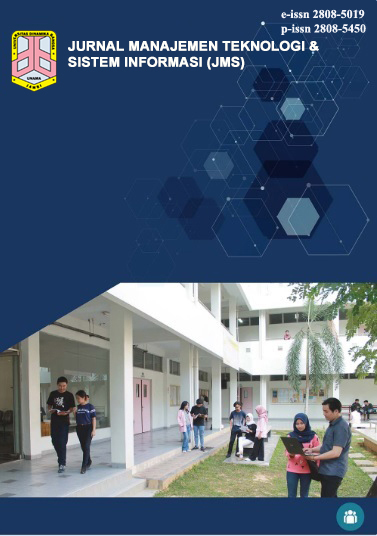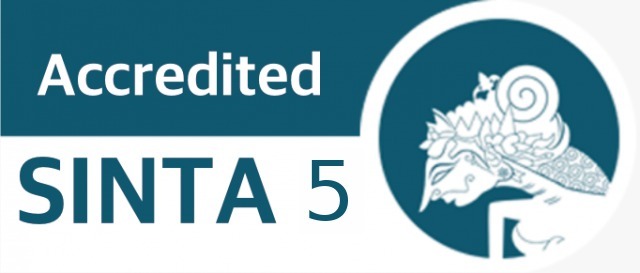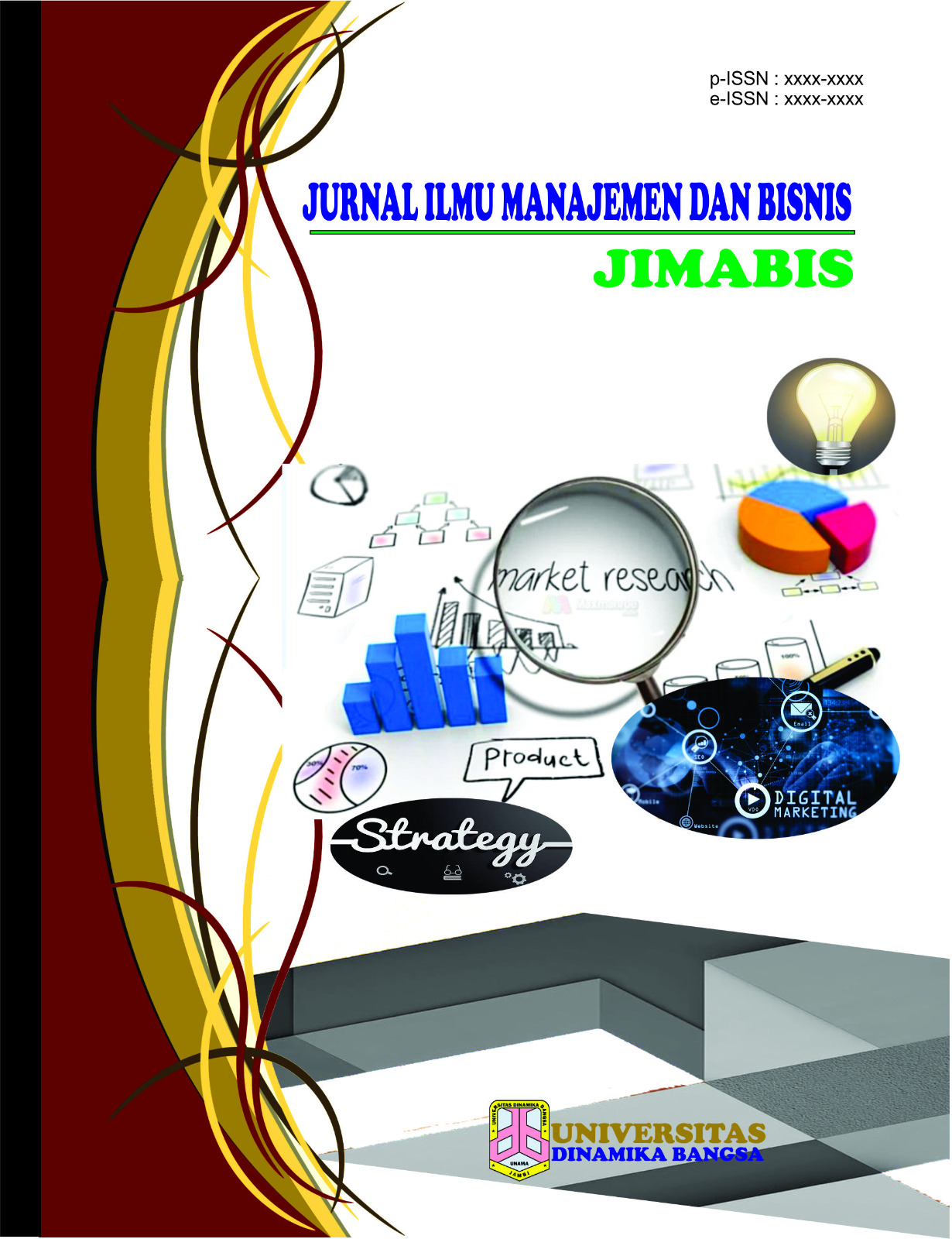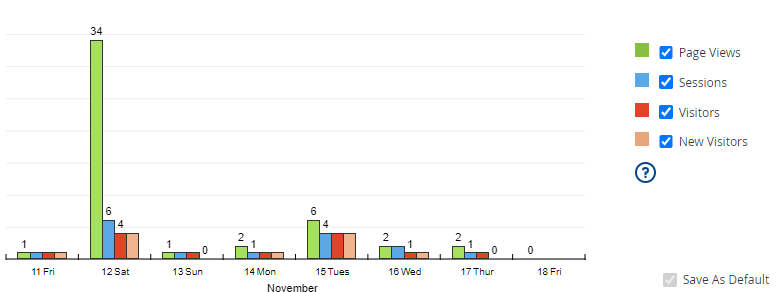Perancangan Arsitektur Enterprise Fase Arsitektur Bisnis dengan TOGAF ADM (Studi Kasus: MSI UNAMA)
DOI:
https://doi.org/10.33998/jms.2024.4.2.1976Keywords:
TOGAF ADM 9.0, enterprise architecture, integrated information systems, Master of Information Systems, technology architectureAbstract
This research explores the application of the TOGAF ADM 9.0 framework in designing an enterprise architecture for the Master of Information Systems (MIS) program at Universitas Dinamika Bangsa Jambi. The study focuses on key phases such as the preliminary phase, architecture vision, business architecture, information systems architecture, and technology architecture, aiming to develop an integrated information system. The MIS program faces several operational challenges, including ineffective promotional strategies, a partially functional e-learning system, and a lack of comprehensive digitalization in academic management and assessment processes. To address these issues, the study proposes the development of web- and mobile-based applications that support processes such as promotion, student admissions, teaching, and academic and administrative management. The resulting architecture design includes an integrated application portfolio catalog, which is expected to enhance the efficiency and quality of academic services within the program.
Downloads
References
A. Unger, M. Spinola, and M. Pessôa, “Requirements Engineering approaches to derive Enterprise Information Systems from Business Process Management: a systematic literature review.”
P. Badakhshan, K. Conboy, T. Grisold, and J. vom Brocke, “Agile business process management: A systematic literature review and an integrated framework,” Nov. 16, 2020, Emerald Group Holdings Ltd. doi: 10.1108/BPMJ-12-2018-0347.
A. Trad, “The Business Transformation Framework and Enterprise Architecture Framework for Managers in Business Innovation: An Applied Holistic Mathematical Model,” International Journal of Service Science, Management, Engineering, and Technology, vol. 12, no. 1, pp. 142–181, Jan. 2021, doi: 10.4018/IJSSMET.20210101.oa1.
J. Manajemen dan Bisnis et al., “Penerapan Arsitektur Bisnis Intelijen Dalam Sistem Informasi E-Commerce Article History,” vol. 2, no. 3, 2023.
G. Emmanuel and S. Kusumawardani, “Pengembangan Model Proses Bisnis eLisa Dalam Pencapaian Tujuan Pembelajaran Universitas,” 2020. [Online]. Available: http://jurnal.mdp.ac.id
D. Proenca and J. Borbinha, “Enterprise architecture: A maturity model based on TOGAF ADM,” in Proceedings - 2017 IEEE 19th Conference on Business Informatics, CBI 2017, Institute of Electrical and Electronics Engineers Inc., Aug. 2017, pp. 257–266. doi: 10.1109/CBI.2017.38.
chernet Gebayew and A. A. Arman, “Modify TOGAF ADM for Government Enterprise Architecture,” International Conference on Wireless and Telematics (ICWT), Feb. 2019, doi: 10.1109/ICWT47785.2019.8978260.
B. Selwyn, “Poverty chains and global capitalism,” Compet Change, vol. 23, no. 1, pp. 71–97, Feb. 2019, doi: 10.1177/1024529418809067.
J. Bair, M. Mahutga, M. Werner, and L. Campling, “Capitalist crisis in the ‘age of global value chains,’” Environ Plan A, vol. 53, no. 6, pp. 1253–1272, Sep. 2021, doi: 10.1177/0308518X211006718.
D. Walters and G. Lancaster, “Implementing value strategy through the value chain,” Management Decision, vol. 38, no. 3, pp. 160–178, Apr. 2000, doi: 10.1108/EUM0000000005344.
D. Taibi and K. Systä, “A Decomposition and Metric-Based Evaluation Framework for Microservices,” in Communications in Computer and Information Science, Springer, 2020, pp. 133–149. doi: 10.1007/978-3-030-49432-2_7.
Y. Abgaz et al., “Decomposition of Monolith Applications Into Microservices Architectures: A Systematic Review,” IEEE Transactions on Software Engineering, vol. 49, no. 8, pp. 4213–4242, Aug. 2023, doi: 10.1109/TSE.2023.3287297.
F. Amalina and Y. Handayati, “Business Process Analysis and Improvement in Selling Process Using Business Process Modelling Notation (BPMN) at Locarvest,” KnE Social Sciences, Mar. 2020, doi: 10.18502/kss.v4i6.6619.
D. Amyot et al., “Combining Goal modelling with Business Process modelling: Two Decades of Experience with the User Requirements Notation Standard,” Enterprise Modelling and Information Systems Architectures, vol. 17, Jan. 2022, doi: 10.18417/emisa.17.2.
H. Tomaskova et al., “The business process model and notation of open innovation: The process of developing medical instrument,” Journal of Open Innovation: Technology, Market, and Complexity, vol. 5, no. 4, 2019, doi: 10.3390/joitmc5040101.















